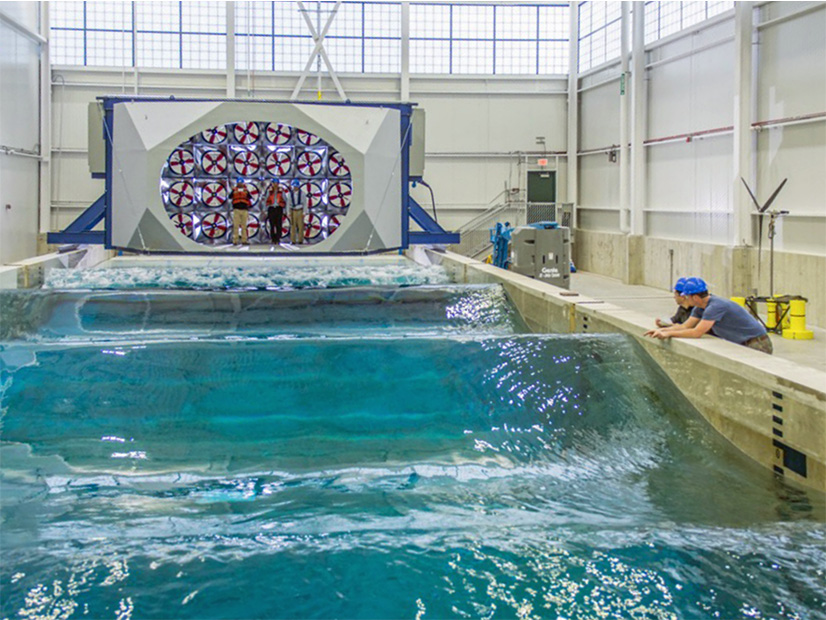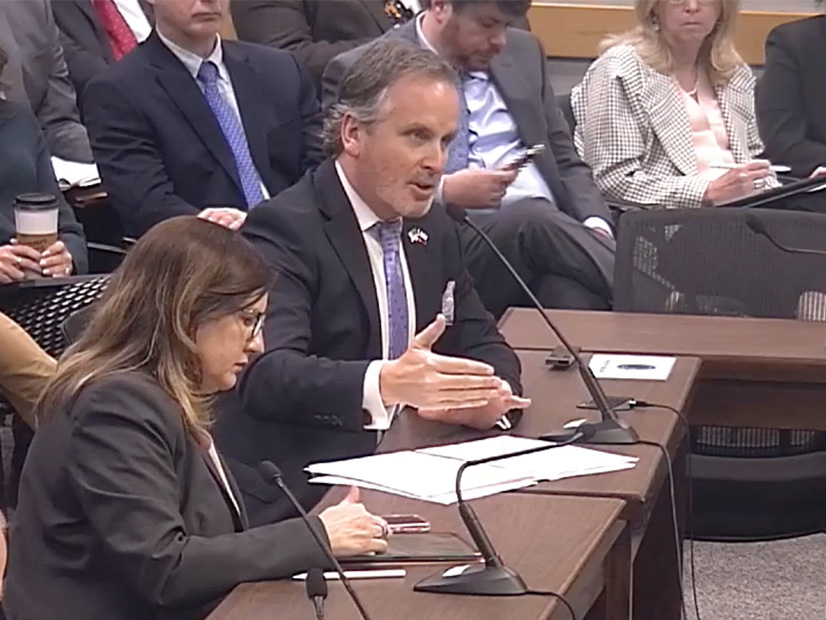PJM’s Board of Managers is opening an accelerated stakeholder process to address rising reliability concerns about the RTO’s capacity market.
The effort includes last week’s release of a PJM white paper detailing a potential imbalance between deactivating resources and new development if interconnections do not speed up.
“Notwithstanding the efforts to date, given recent events and analyses, the Board believes near-term changes to the Reliability Pricing Model (RPM) are necessary to ensure that PJM can maintain resource adequacy into the future,” the board said in a letter to stakeholders Friday. “The Board also continues to value robust stakeholder review, input and challenge to help solve complex problems such as this.”
In invoking PJM’s Critical Issue Fast Path process, the board aims to submit a FERC filing by Oct. 1 to address many of the issues stakeholders have been deliberating in recent months. The letter also noted that FERC recently announced the opening of a forum to examine PJM’s capacity market, saying the commission’s interest underlines the need for the fast-track process and could provide a venue to vet potential solutions ahead of the potential October filing. (See FERC OKs PJM Proposal to Revise Capacity Auction Rules.)
The scope of the fast-track process includes revising the capacity performance model and how penalty risks can be accounted for in capacity offers; improving resource accreditation to ensure that reliability contributions are accounted for and compensated; and enhancing risk modeling to improve understanding of winter risk and correlated outages. The board also aims to align the RPM and fixed resource requirement rules to ensure that supply and demand are held to comparable standards.
The board will be exploring whether any potential changes it proposes should be applicable to auctions prior to the 2027/28 Base Residual Auction, which could require delays to future auctions. It has directed staff to draft possible alternative auction schedules.
PJM White Paper Expounds Reliability Concerns
The letter was released the same day PJM published a white paper finding that the rate of deactivating generation is outpacing the development of new resources. (See PJM White Paper to Highlight Future RA Concerns.)
“For the first time in recent history, PJM could face decreasing reserve margins … should these trends — high load growth, increasing rates of generator retirements, and slower entry of new resources — continue,” the paper states.
About 40 GW of generation is expected to retire by 2030, representing 21% of the current installed capacity, while one of the scenarios PJM identified would see only 15 GW of new resources installed. The RTO could fall below its target reserve margin by the 2026/27 delivery year and continue declining through the rest of the decade.
PJM also found that increasing data center growth and the electrification of vehicles and home heating could exacerbate the decreasing amount of capacity available by pushing its long-term load forecasts higher.
“Along with the energy transition, PJM is witnessing a large growth in data center activity. Importantly, the PJM footprint is home to Data Center Alley in Loudoun County, Va., the largest concentration of data centers in the world … In 2022, the [load analysis subcommittee] began a review of data center load growth and identified growth rates over 300% in some instances,” the white paper states. (See Policymakers Working to Meet Spiking Demand of Data Centers in Virginia.)
PJM’s estimates for new generation are based on existing projects in the interconnection queue and the historical rate for resources to reach commercial status, paired with a series of projections through 2030 from S&P Global. The low-entry scenario is based on the current rate of approximately 5% of projects entering the interconnection queue reaching commercial operation, while the high-entry alternative includes a “fast transition” model assuming “carbon net neutrality by 2050 through the IRA and additional policies.”
The pairing of the accelerating electrification projection and low-entry scenario could result in a reserve margin of 3% by 2030, while pairing that projection with the high-entry model would see a 12% margin. According to the PJM Independent Market Monitor’s third quarter State of the Market Report, the 2023 installed reserve margin target is 14.8%, far exceeded by the projected reserve of 21.6%.
PJM said the reliability risks underline the need to continue its work on changes to its capacity market, interconnection process and clean energy procurement, while embarking on “combined actions to de-risk the future of resource adequacy while striving to facilitate the energy policies in the PJM footprint.”
The 40 GW of deactivations is largely attributed to government and private sector policies, with an estimated 25 GW due to various on-the-book and proposed policies. A further 12 GW of retirements are either underway or announced over the next few years and another 3 GW is estimated to be due to economic reasons.
Monitor Joseph Bowring said he agrees with PJM’s assessment of the scale of policy deactivations and pace of resource development; however, he believes PJM is underestimating the likely number of economic retirements by understating the avoidable cost rate he believes generators are likely to face.
He also believes PJM is overstating the amount of capacity available by including demand response and by using an inaccurate approach to calculating the capacity provided by renewable resources.
“An essential part of addressing expected reliability issues is to identify the expected sources of new generation. That resource mix will include both renewables and gas-fired generation, but PJM needs to focus on exactly how new generation will meet peak loads,” Bowring said. “There are a lot of resources in the queue, but the question is whether they will provide reliability when it is most needed, including the expected performance of renewables and the adequacy of firm gas supply.”
Bowring believes the first step PJM must take is to modify the current capacity market design, including eliminating extreme penalties from the capacity market, relying on energy market incentives and adding firm fuel and testing requirements to ensure reliability during cold- or hot-weather emergencies. To support the first recommendation, he pointed to the $1-$2 billion estimate of the capacity performance penalties generators are facing from the Dec. 23 winter storm.
“The extreme penalties in the current capacity market design create an administrative process that adds unacceptable uncertainty to the process and that can never approach the effectiveness of the energy market in providing price signals and timely settlement,” he said. “There is no reason that in a rational market design, less than 24 hours of cold weather would result in a crisis and a level of administrative complexity that threatens to undermine the incentives to invest in existing and new supply resources at a time when those resources are needed. The current capacity market design undermines incentives rather than creating positive incentives to invest and perform.”
While he’s glad to see PJM directly discussing future reliability more often, Bowring said he does not believe the best approach is to take the response out of stakeholders’ hands through the board’s fast-track process.
Tom Rutigliano, senior advocate with the Natural Resources Defense Council, said the report shows that new resource development is key in addressing a critical risk a few years away.
“To be clear: the problem for 2030 is PJM’s project completion rate for new renewables and transmission, not the retirement of polluting, high-emitting plants,” Rutigliano said. “It is PJM’s responsibility to identify worst-case scenarios with time to avoid them, and this report highlights the urgent need to remove barriers to new supply in PJM. PJM and states now must work together to rapidly speed interconnection, get needed transmission upgrades built, and fix rules that keep supply from other regions and new technologies from supporting reliability.”
PJM Power Providers (P3) President Glen Thomas said recent actions by PJM and FERC have undermined both the capacity market and the reliability it’s meant to provide. In particular, he said the commission’s order last week accepting PJM’s proposal to revise the reliability requirement of locational delivery zones under specific circumstances follows a pattern that is “not only unsupportive of competition, but directly damaging to markets and market participants’ confidence in them.”
“The results of the report are not surprising,” Thomas said. “Reliability will be compromised when demand is increasing and state and federal policies are actively promoting the retirement of resources that are needed to maintain reliability. Not mentioned in the report is the significant impact that PJM and FERC actions to undermine the capacity market, PJM’s tool for ensuring reliability, have had to drive investors away from PJM. That represents a direct threat to reliability and will cost consumers more money than they should be paying for that reliable supply of power. PJM is headed toward a bad spot, and it’s going to take a collective effort to make sure we don’t get there.”



